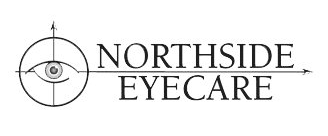Start living the life you deserve to live. Live your life your way.
Some experts estimate that approximately 5% to 10% of pre-schoolers and 25% of school-aged children have vision problems. According to the American Optometric Association (AOA), all children should have their eyes examined at 6 months of age, at age 3 and again at the start of school. Children without vision problems or risk factors for eye or vision problems should then continue to have their eyes examined at every year throughout school.
Pediatric Eye Exams in Evansville, IN
Adults and children are often treated differently in a medical environment. Not only do the types of diseases and illnesses that they are susceptible to differ, but so do the treatments and the way they need to be examined. Studies have indicated that vision problems affect one in twenty pre-school aged children, and one in four school-aged children, so it’s extremely important that your child gets a pediatric eye exam regularly.
When it comes to pediatric eye exams, it’s important that you go to an eye doctor who specializes in working with children, such as the eye doctors here at Northside Eyecare in Evansville. They will know how to properly communicate with your child, both during the examination and when explaining the results (as well as being able to explain to the parents!)
It can sometimes be difficult with children to know if they have a vision problem. Even though they may know that there is an issue, they may not tell you, or may not be able to accurately describe the problem. For example, a child who has had poor long-distance vision for a substantial amount of time may not even be aware that they have a problem.
Why Are Pediatric Eye Exams Important?
Eyes are very important in the learning process and eye or vision problems can be central in the overall development of a child. Not only is it quicker and easier to cure problems if they are diagnosed at an early age, but it can impact on how your child learns at school and can even affect whether they want to go to school.
A good children’s eye exam will check issues which are vitally important for learning, as well as avoiding discomfort and future problems, such as:
- Distance vision
- Near vision
- Focusing skills
- Binocular (two eyes) coordination
- Eye movement skills
- Hand-eye coordination
- Peripheral awareness
Detecting Eye Problems in Children
It isn’t always easy to tell if a child is suffering from an eye problem, and the best way to know is by taking them for regular checkups with a good eye doctor. However, there are some signs that your child may be having vision problems. If you start to notice any of the symptoms below, take your child to the eye doctor as soon as possible. These symptoms include:
- Headaches
- Eye rubbing
- Droopy eyelids
- Tearing
- Sensitivity to light
- Swelling
- Pus
- Redness
- Crust
- Bulging eyes
- White, yellow, or gray-white material in the pupil
The health of their children is something that every parent should take seriously. The health of their eyes at a young age is central to their learning and development inside and outside of school, their ability to play sports, and use computers. Early detection of eye problems also helps prevent more serious issues in the future.
When do Children Need Eye Exams?
The American Optometric Association (AOA) recommends infants to have their first comprehensive eye exam at 6 months old. After that, they recommend additional exams at age 3 and when the child starts first grade at age 5 or 6.
For school-aged children, the AOA recommends an eye exam every two years if no vision correction is required. Kids who need glasses or contact lenses should have an exam every year, or as recommended by their optometrist (OD) or ophthalmologist (eye MD).
When scheduling, make sure to choose a time of day when your child is happy and alert. While the specifics of your child’s visit will depend on their age, a pediatric exam will generally include a case history, vision testing, eye alignment test, eye health evaluation, determination the need for eyeglasses, and potentially a prescription for eyewear.
Common Eye Problems for Kids
Lazy eye (amblyopia)
Amblyopia, or “lazy eye,” is a common problem that can decrease vision in one or both eyes without detectable anatomic damage. Amblyopia is often correctable with eye patching to strengthen the weaker eye.
Eye misalignment (strabismus)
While causes can vary, crossed or misaligned eyes can often lead to amblyopia. Early treatment helps vision and eye teaming skills develop normally.
Eye convergence insufficiency
The inability to maintain eye alignment when viewing objects at a close distance, this condition is important to identify and treat to allow comfortable reading.
Focus Ability, Depth Perception, and Color Vision
Being able to concentrate/focus on an object, gauge distances, and identify colors provides early awareness of a child’s needs for corrective action or supplemental treatment needed to aid color blindness and other issues.
Anterior eye and eyelid health
Your eye doctor will look for abnormal or infected eyelash follicles, discharge, swelling, or bumps on your child’s eyelids, as well as any irregularities on the cornea, iris, and lens of the eye itself.
Eye Exams for Infants
At 6 months old, babies should be able to see as well as adults in terms of focusing ability, color vision, and depth perception. A few examples of tests commonly used at an infant’s first eye appointment are:
Pupil Response
Checking to see if the pupil dilates and contracts properly in the presence and absence of light.
Fixate and Follow
By 3 months old, babies should be able to fixate on an object and follow it. This test is generally performed by shining a small light at the baby and moving it, watching to see if the infant follows it with their eyes.
Preferential Looking
By using two-sided cards, a blank side and a striped side, the doctor will test the infant’s ability to switch gaze to the striped card. This helps to assess vision without using a traditional eye chart.
QUICK LINKS
All Rights Reserved | Northside Eyecare

